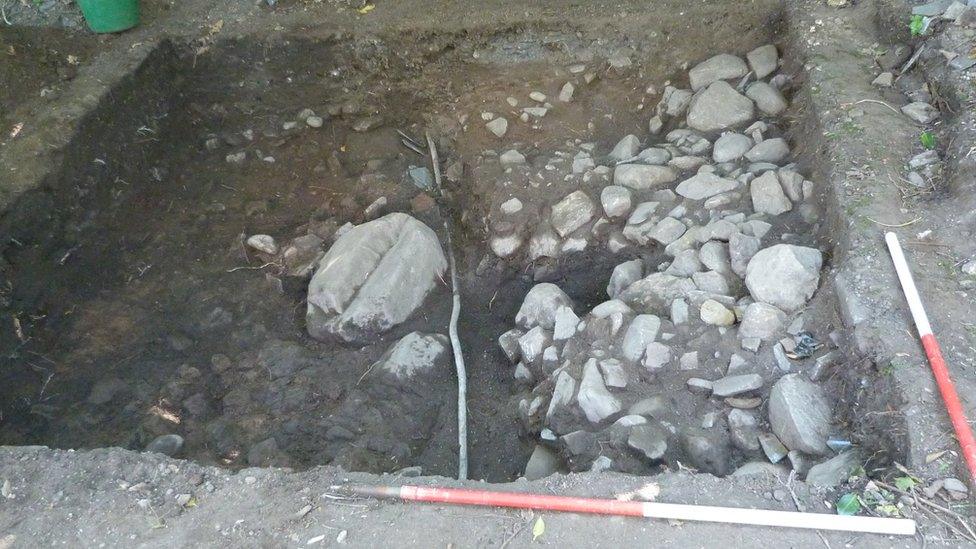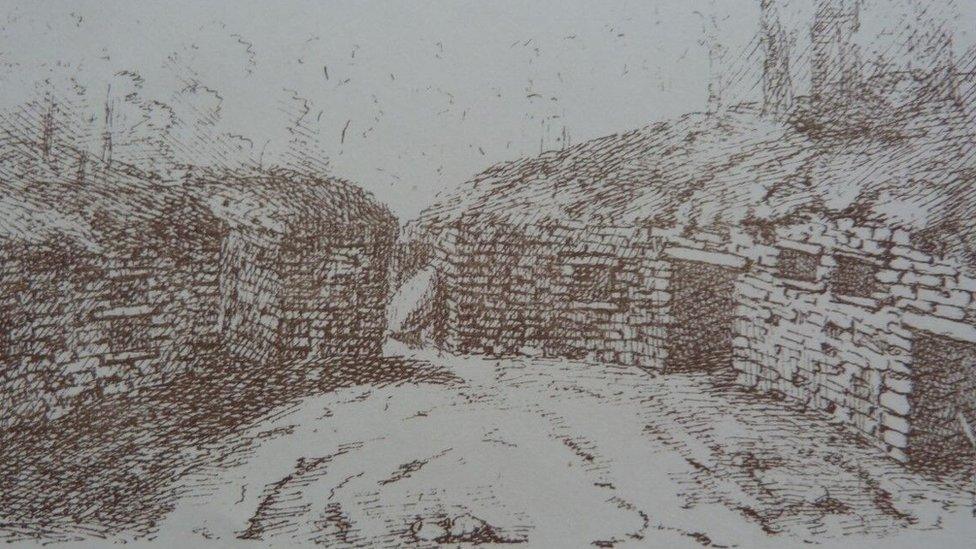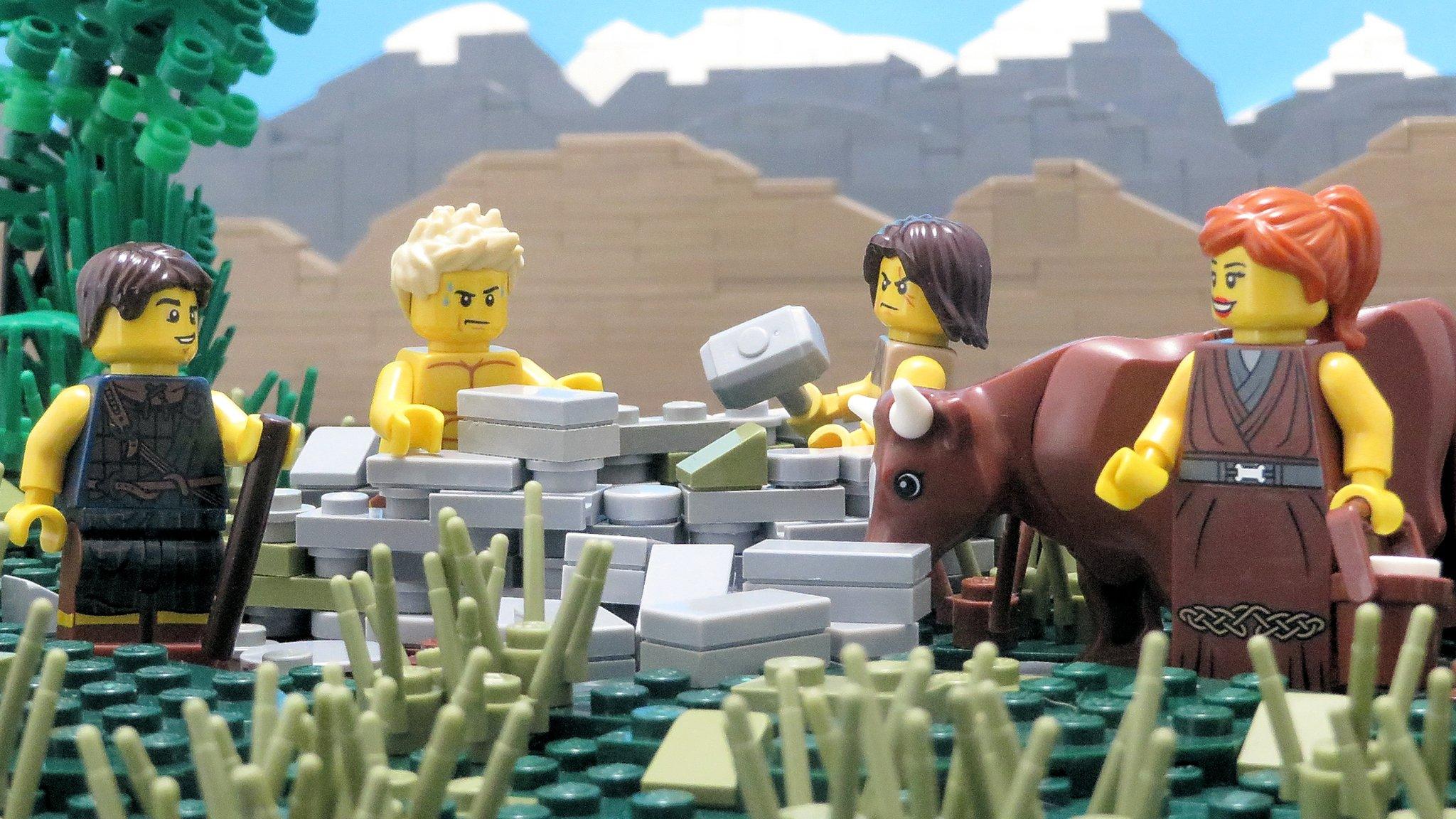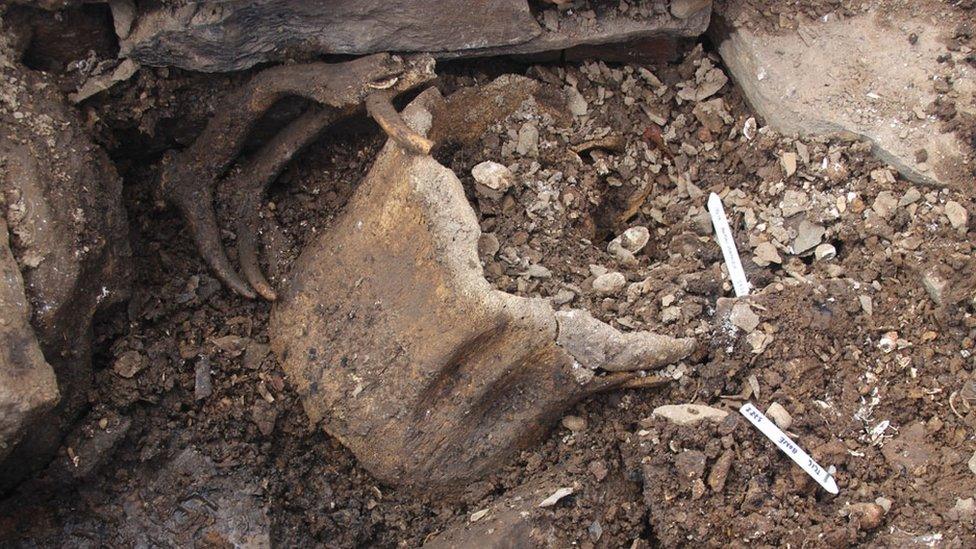New hope of uncovering Stirling's lost Iron Age roundhouse
- Published

Archaeologists believe they have found part of the interior and the wall of the broch
Archaeologists believe they have found part of the remains of an Iron Age roundhouse, known as a broch, in Stirling.
It was first discovered and described by a local archaeologist Christian Maclagan in the 1870s.
Attitudes towards women at the time meant her academic paper on the broch was only accepted after it was transcribed by a man.
A new dig is planned at the site after initial excavations last year.
Maclagan's discovery in Wester Livilands was lost under a landscaped garden.
On the afternoon of the last day of last summer's excavation, stones were found that suggested archaeologists were digging in the right place.
Two weeks ago, further work was done and revealed what is believed to be part of the interior and wall of the broch.
A crowdfunding campaign is expected to be launched to help fund a proper excavation.
Maclagan's discovery is important because the broch is the only known example to date of an Iron Age roundhouse in an urban setting.
The stone-built towers are more commonly found in rural and remote parts of the north of Scotland, including Caithness, Glenelg on the west Highland coast and Orkney.
- Published12 August 2016

- Published26 July 2016

- Published21 July 2016

- Published7 July 2016
